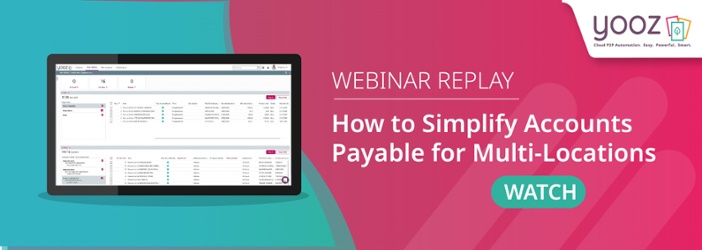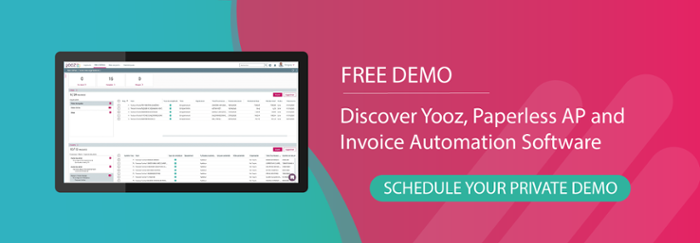Everyone knows that feeling of dread which seems to take over just when it's time to get receipts in order for the tax return. This is especially true when things have fallen behind (for whatever reason) and now there is deadline for matching a particular purchase from months ago with bank or credit card statements, having to assign amounts to a particular project or expense category, or making sure not to double-book items. Perhaps even unearthing an unpaid invoice in the process. When you're not caught up - or even if you are - having documentation every step of the way helps. A lot.
This situation isn't much different for a business, where accounting departments or accounts payable teams are constantly processing reams of expense reports, vendor invoices, and other documents. If anything, for them, being behind causes all sorts of reporting issues and greatly increases the risk of error and accounts payable fraud.
Especially when you consider the handling of hundreds or thousands of expense reports and invoices, not catching faulty or outright bad ones does more than upset management. It can have a direct and substantial impact on the company's bottom line. And the potential for damage is significant. When market researcher Ardent Partners polled finance leaders for its “State of ePayables Report 2021,” a record 38% of them said that their business was the target of a payment fraud attack in the past year.
Although the problem of accounts payable fraud always existed, the pandemic clearly exacerbated it and increased the need for continuous auditing capability. Indeed, the report warns that this exposure will not go away anytime soon: “The risk of payment fraud attacks will be part of AP's 'new normal' and… strategies and tools designed to thwart it will become more important.”
For this reason alone, having a digital audit trail is a priority.
The Ins and Outs of a Digital Audit Trail
Having a digitalized accounts payable process in place means that your software system automatically logs every interaction with any document, including as many details as possible. The goal of this activity is two-fold: to automatically and immediately flag (and therefore catch) documents that don't pass must, and to both log and preserve these interactions for future checks and audits by specific authorized users. Even better, if your software platform is cloud-based, the user can access this information from anywhere at any time. Because it offers such a huge benefit, let's make that cloud assumption!
Once these digital bits of the audit trail - including detailed timestamps - have been securely stored in the cloud, "going to the archive" becomes an instant affair. Searching for a document and tracking its entire path through the accounting workflow is as easy as performing an internet search in a browser. This record/track ability provided through automation ensures that errors and risks such as paying a fraudulent invoice or expense report go down significantly. At the same time, the business knows that it can meet and offer proof of compliance and operations integrity.
In fact, having a digital audit trail in place can even reduce the chance of being questioned or audited down the road.
How a Digital Audit Trail Counters Payment Fraud
Technology is a fascinating and beneficial tool. However, the move to virtual and remote work using various technology platforms creates a higher IT and data security risk, more exposure to fraudsters, and as a result greater chance of a data or security breach event. This became a clear (and existing) problem thanks to the increase in remote operations and virtual work resulting from pandemic stay-at-home mandates. Massive financial hits came on top of the already well-known flaws inherent in expense reports.
Those massive financial hits owed to the pandemic and WFH mandates come on top of the already well-known flaws inherent in expense reports. When the American GBTA Foundation and German booking platform HRS looked at expense reports back in 2015, they found that almost one in five contained errors. This in turn resulted in an additional 18 minutes and 2 in additional staff costs per report to correct those errors in order to meet compliance requirements.
Wouldn't it be nice, then, if an audit trail application powered by the latest in machine learning and robotic process automation was smart enough to preemptively check and, where possible, verify or match vendors, account and routing numbers, invoice and PO numbers, amounts and other crucial details to weed out error and fraud? Not only for the sake of being accurate but to avoid this type of circumstance?
Capturing Every Detail Along the Digital Audit Trail
Companies that intelligently automate their entire purchase-to-pay process - from intake to payment - see their exception rate drop from one in four to one in ten invoices, as well as see instances of outright fraud or duplicate payments go down significantly. What's more, logging every electronic record, relevant click, and keystroke when an invoice or expense report is handled also means a huge drop in staff time (and frustration) spent on looking for documents instead of being better put to use elsewhere.
This is why having a cloud platform like Yooz also offers the possibility of YoozPay, an advanced feature that allows companies of any size to onboard and pay their vendors directly inside the Yooz platform. This completely automates the entire invoice payable process and creates a new opportunity to generate valuable cash-back rewards as a new, recurring revenue stream.
Smart Matching and Access Control
Here's how the digital AP workflow stays secure, helps identify areas of non-compliance, and checks for errors:
- When an invoice arrives, it is captured regardless of the original format, the relevant data points are extracted, and the information is securely stored as an electronic record in the cloud. If the invoice (or document) came in on paper, the original can now be shredded.
- The invoice information is checked. In the case of Yooz, two- or three-way matching is used to ensure that the incoming data is an exact match with the purchase order (PO) or other documents on file. Once matched, a balance check, a tax amount check (if any), and an expense account check are performed.
- Only users with login credentials in an organization or company can access documents stored in the cloud. Authorized users can see the record history, including who has accessed it, who has approved it, and its current location in the workflow process.
- Permission access can be controlled according to the dollar amount and / or sensitivity of the record, so only approved employees will be able to virtually “touch” the document.
- Once the record is in the automated system, it becomes part of an efficient and powerful digital invoice workflow. From capture and data extraction through proper routing for approval to finally payment, the goal is to enable straight-through electronic processing that requires little to no human intervention.
- In the final step, the transaction and matching document information is exported to and reconciled with the company's financial or ERP system.
A Digital Audit Trail Secures B2B Payments End-to-End
As previously mentioned, including a final (optional) feature allows companies to keep track electronically from the beginning to the end. Adding a payment option will put security and state-of-the-art audit capabilities at the heart of B2B payments, all without compromising user convenience.
With YoozPay, vendors can be paid by providing a single email address and choose to receive funds instantly via virtual credit card. These digital credit cards offer more granular controls and traceability of payments and reduce errors. Accounts payable staff, for their part, can easily onboard suppliers and let Yooz handle the payment process.
Like the automated workflow process, the payment feature is also designed to meet the high security requirements of enterprise transactions. This means that security measures are built in at every level of the invoice process, including limits and velocity checks as well as pattern checks for additional control.
So, while it might be easy to submit an incorrect expense report or invoice, having an automated process creates a digital audit trail that maintains security throughout the entire invoice process and will pay off over and over again.
FAQs
How does Yooz ensure the integrity and completeness of digital audit trails within its platform?
Can Yooz's digital audit trail be customized to track specific actions or events based on our company's unique requirements?
How does Yooz use digital audit trails to support compliance with regulatory requirements and internal policies?
What tools does Yooz offer for accessing and analyzing digital audit trail data to identify anomalies or potential issues?







